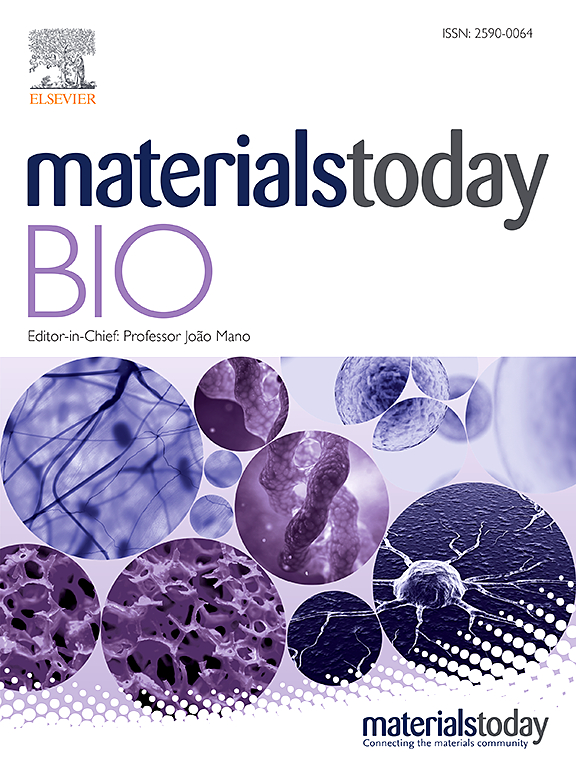Lumbrokinase-containing gelatin nanofibers with multiple bioactivities for effective skin wound healing
IF 8.7
1区 医学
Q1 ENGINEERING, BIOMEDICAL
引用次数: 0
Abstract
Wound healing is a highly complex and intricate biological process involving cellular and molecular events. Given that lumbrokinase is a fibrinolytic enzyme derived from earthworms and exhibits notable anti-inflammatory, anti-fibrotic, and pro-angiogenic functions, this study aims to investigate the development of bioactive gelatin nanofibers containing lumbrokinase (GLK) fabricated through electrospinning as a novel nanomedicine strategy for enhancing wound healing. Our results showed that reducing electrospinning time can increase cross-linking degree and decrease degradation rate to maintain an effective concentration of released LK for supporting long-term biological processes. Cells cultured with biocompatible GLK displayed good adhesion and extensive spreading, increased VEGF production, and lowered IL-6 and TNF-α secretion. The GLK with superior and multiple bioactivities was further tested for tissue regeneration potential in a rat model of skin defect. The treatment of animals with GLK shortens wound healing time, reduces damage caused by inflammation, and increases collagen production, angiogenesis, and fibroblast proliferation/epithelialization, demonstrating that the healing effect on the local wounds is comparable to that of Comfeel group. Overall, the findings from preclinical studies suggest high promise of the LK-loaded biopolymer nanofibers as bioactive dressing materials for promoting a regenerative environment and accelerating wound healing, indicating its future translational potential.

求助全文
约1分钟内获得全文
求助全文
来源期刊

Materials Today Bio
Multiple-
CiteScore
8.30
自引率
4.90%
发文量
303
审稿时长
30 days
期刊介绍:
Materials Today Bio is a multidisciplinary journal that specializes in the intersection between biology and materials science, chemistry, physics, engineering, and medicine. It covers various aspects such as the design and assembly of new structures, their interaction with biological systems, functionalization, bioimaging, therapies, and diagnostics in healthcare. The journal aims to showcase the most significant advancements and discoveries in this field. As part of the Materials Today family, Materials Today Bio provides rigorous peer review, quick decision-making, and high visibility for authors. It is indexed in Scopus, PubMed Central, Emerging Sources, Citation Index (ESCI), and Directory of Open Access Journals (DOAJ).
 求助内容:
求助内容: 应助结果提醒方式:
应助结果提醒方式:


